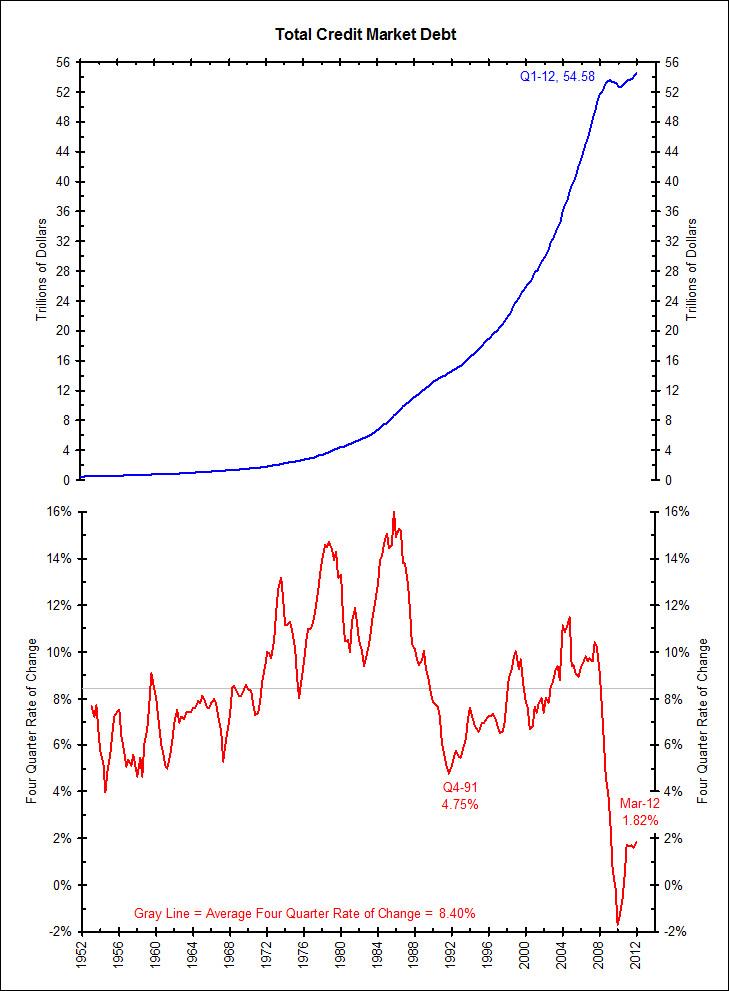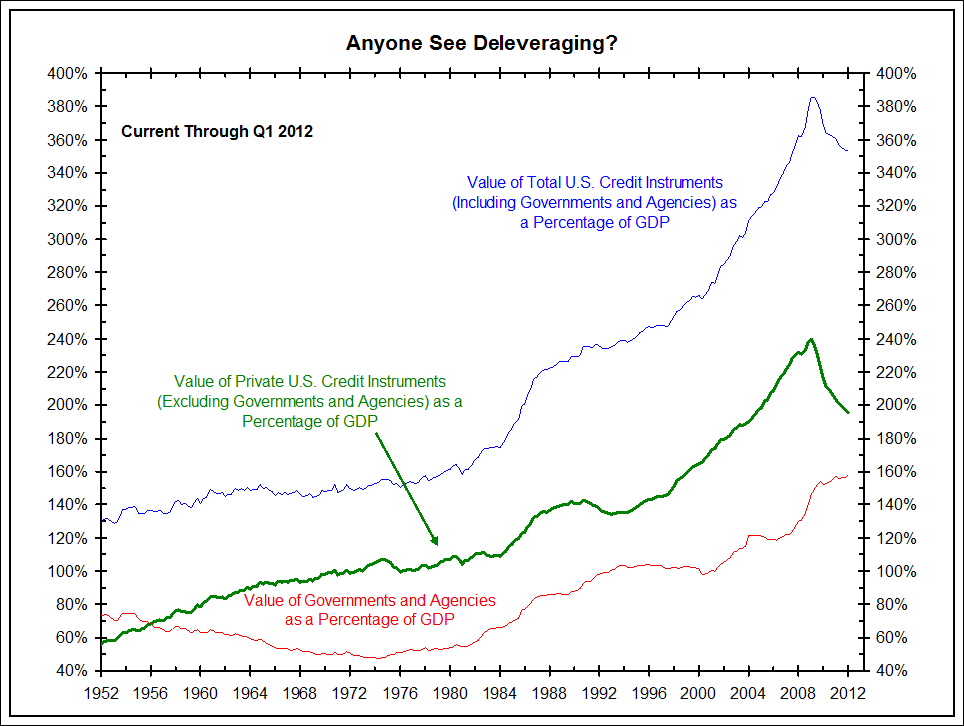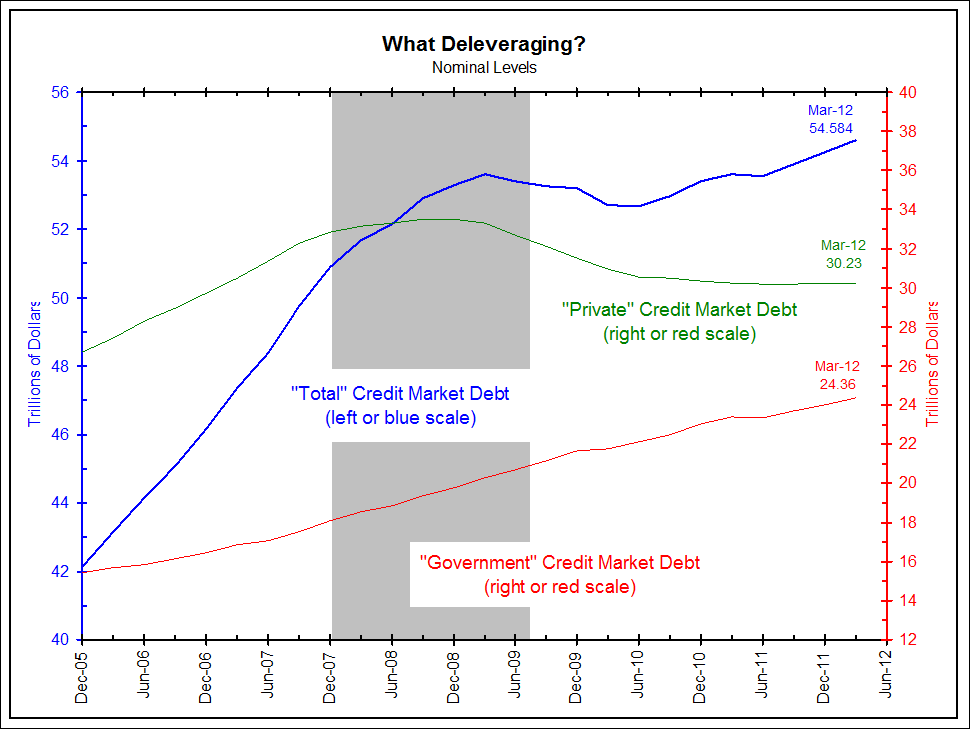Market News – U.S. debt load falling at fastest pace since 1950s
In fact, since the recession ended in June 2009, total U.S. debt has risen at the slowest pace since they began keeping records in the early 1950s. While Washington has taken on a lot of debt since then, the private sector has paid off, written off or dumped on the government almost as much. As a share of the economy, debt has plunged as a consequence of rapid deleveraging by families, banks, nonfinancial businesses, and state and local governments. The ratio of total debt to gross domestic product has fallen from 3.73 times GDP to 3.36 times. In the 11 quarters since the recession officially ended, total domestic debt has risen by just $702 billion, or 1.4%. By contrast, in the 11 quarters before the recession began, in those bubble years of 2005, 2006 and 2007, total debt increased by $10.7 trillion, or 28%.
Comment
The chart below shows what the story above says, debt is growing slower than anytime since the 1950s (second panel).
Click to enlarge:
Comment
Comment
Source: Bianco Research





What's been said:
Discussions found on the web: